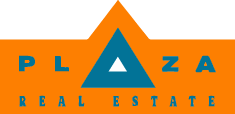What’s old typically becomes new, right? Whether it’s fashion, music, dance styles or décor, never count a trend down and out, because the chances are good that it will see a revival.
Scandinavian décor hit it big again some years ago. And now, we’ve niched that down to a return to the “Danish modern” period of furniture design.
While once the epitome of tasteful, modern décor, Danish modern is now considered vintage, and in high demand. While some authentic pieces may run into the thousands of dollars, there are still bargains available if you don’t mind using pieces from lesser-known designers.
The Danish modern period runs, roughly, from 1920 to the 1960’s.
Danish modern history
The early 1900’s saw a plethora of new inventions including adhesive tape, the airplane, the ballpoint pen and the Model T. Furniture designers around the world also became caught up in the movement toward new concepts and ideas.
Kaare Klint, a designer from Copenhagen, felt otherwise. According to Andrew Hollingsworth, author of “Danish Modern,” Mr. Klint, a traditionalist, felt that there was no need to reinvent furniture.
Changing the lines and materials were all that was required to modernize traditional pieces. Klint ascribed to a design ideal that put comfort and utility over design.
Subsequent designers of note, such as Hans Wegner, Finn Juhl and Ole Wanscher expanded on Klint’s foundation to create what is now known as Danish modern furniture.
Form
Danish modern furniture is, overall, simple, or, as Andrew Hollingsworth describes it, “austere.” While chairs were designed primarily for comfort, designers carefully sculptured them into works of art.
Free-flowing designs, such as Finn Juhl’s Pelikan chair, are examples of this concept: comfort combined with artistic flair.
Danish modern cabinetry has simple lines, chairs typically contain pointed arms and sofas are streamlined, many with asymmetrical backs.
Wood
One of the hallmarks of true Danish modern furniture is dark wood. Teak was one of the more commonly used materials, with European oak running a close second. Rosewood was employed in higher-end designs, according to Andrew Hollingsworth.
Mahogany, while not common, was utilized during the latter half of the period. After World War II, when materials were scarce, designers began using plywood, bending it and molding it into their designs.
The famous Ant Chair, designed by Arne Jacobsen in 1952, used a single piece of plywood, bent into the design.
Metal
Poul Kjaerholm’s designs diverged from those of his contemporaries by his extensive use of steel instead of wood. In keeping with the main hallmark of Danish modern design – comfort – he combined steel with wood, leather and other materials.
Overall, the play of light on steel ignited his artistic sensibilities and provided stunning Danish modern pieces that today’s collectors clamor after. Check out this 3-seat sofa that sells today for more than $44,000USD.
You do not need to pay that much, however for pieces that inspire you.
Fabrics that define Danish Modern
Another common hallmark of Danish modern furniture is the choice of leather for upholstered pieces. Chairs and stools were frequently upholstered in different types of leather, with the patterns of ostrich leather in high demand.
Later in the movement, while leather was still prominent, stretch fabric was utilized frequently. While the darker colors, such as black and deep brown, were the most popular, toward the end of the period green and light blue leather were in vogue.
Learn more about Danish Modern at Collector’sWeekly.com and HiveModern.com and view creations from some of the more famous furniture designers at DanishVintageModern.com.au.
Got questions, comments or feedback? Email [email protected]
To find out more, you’re welcome to call 08 83961100 to arrange a chat with people that care.
Alternatively, Book a Free Consultation or Get Your Home Value Here. We’ll Guide You Home!
Feel free to browse the rest of our Blog for more tips tricks and helpful info you can use.
Not sure of some of the terms & meanings used? Check our comprehensive Glossary, Abbreviations and FAQ’s!
P.S. If you are part of a Club, Group, School or Organisation and need someone to ‘Speak about Real Estate & Property’, You’re Welcome to ask or Click Here. For Sponsorship, Click Here.
Want to read in Another Language? Go to our Home page & Scroll to the bottom and choose Translation.
Want Proof of our ability? Check Client References.
Your Home SOLD in 90 Days or Less or We SELL it for FREE!
Our FEES are Less than Your First Price Reduction with the Wrong Agent.
Thanks for reading…
What else would YOU like to know about? What would make a great story?
Do you have any specific questions or advice on buying, selling, renting or investing? Real Estate trends? Local, interstate international? Info on the buying or selling process? How to sell or buy? What NOT to do?
What can you TELL us about?
Your neighbourhood – What do you love? Shops, Parks for families, pets, to relax? Restaurants, pubs, hotels, places to go, things to do? Anything else at all? Share Your Own Real Estate, Property, Wisdom & Experiences… The Good, The Bad or The Ugly? What have you learned that other people should know?
Know someone who needs help?
You can REFER them here.
Whatever Topic or Suggestion you have… email us at [email protected] or call 08 83961100. We’d love to hear about your ideas.
Like most things in life, these are recommendations only. It is not legal advice, it may or may not suit your own circumstances and you may need to make your own additional enquiries.
Regards Eriks & Team Plaza Real Estate
Powered by WPeMatico




